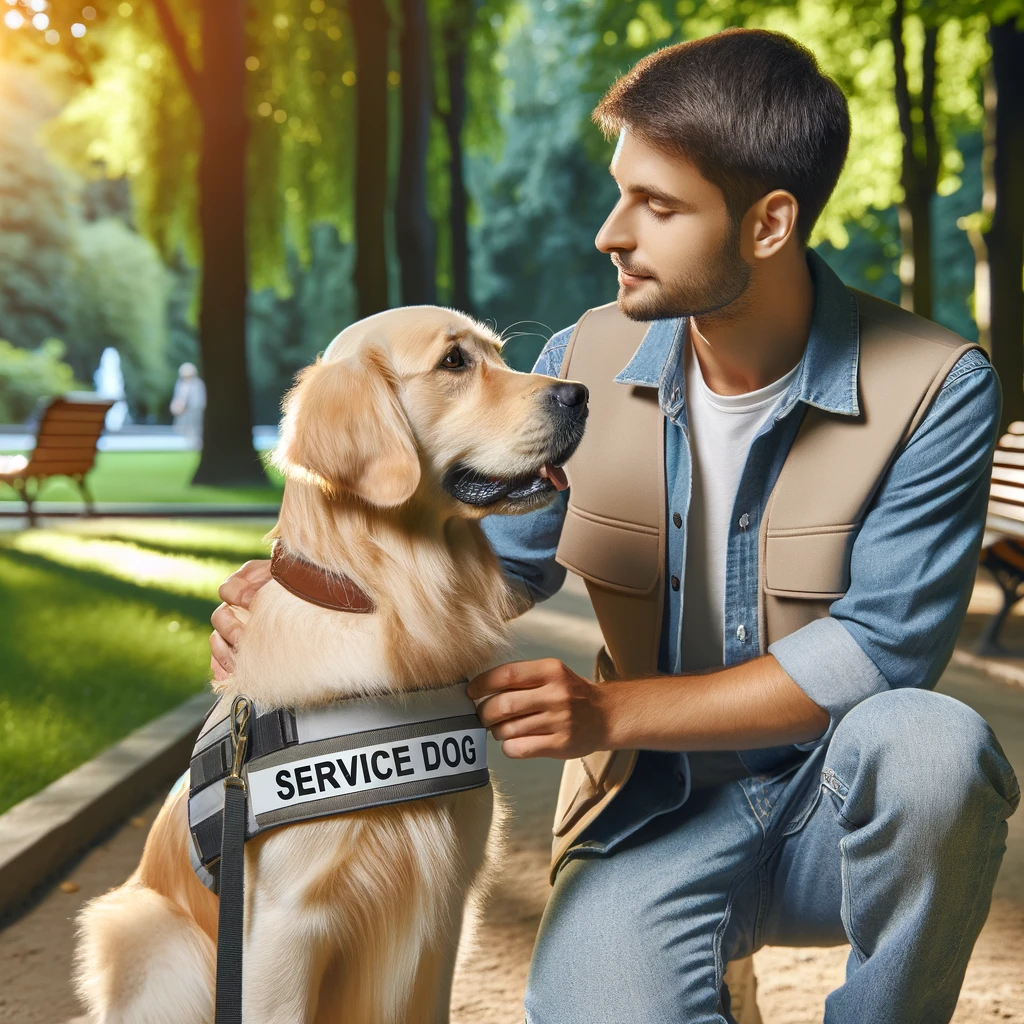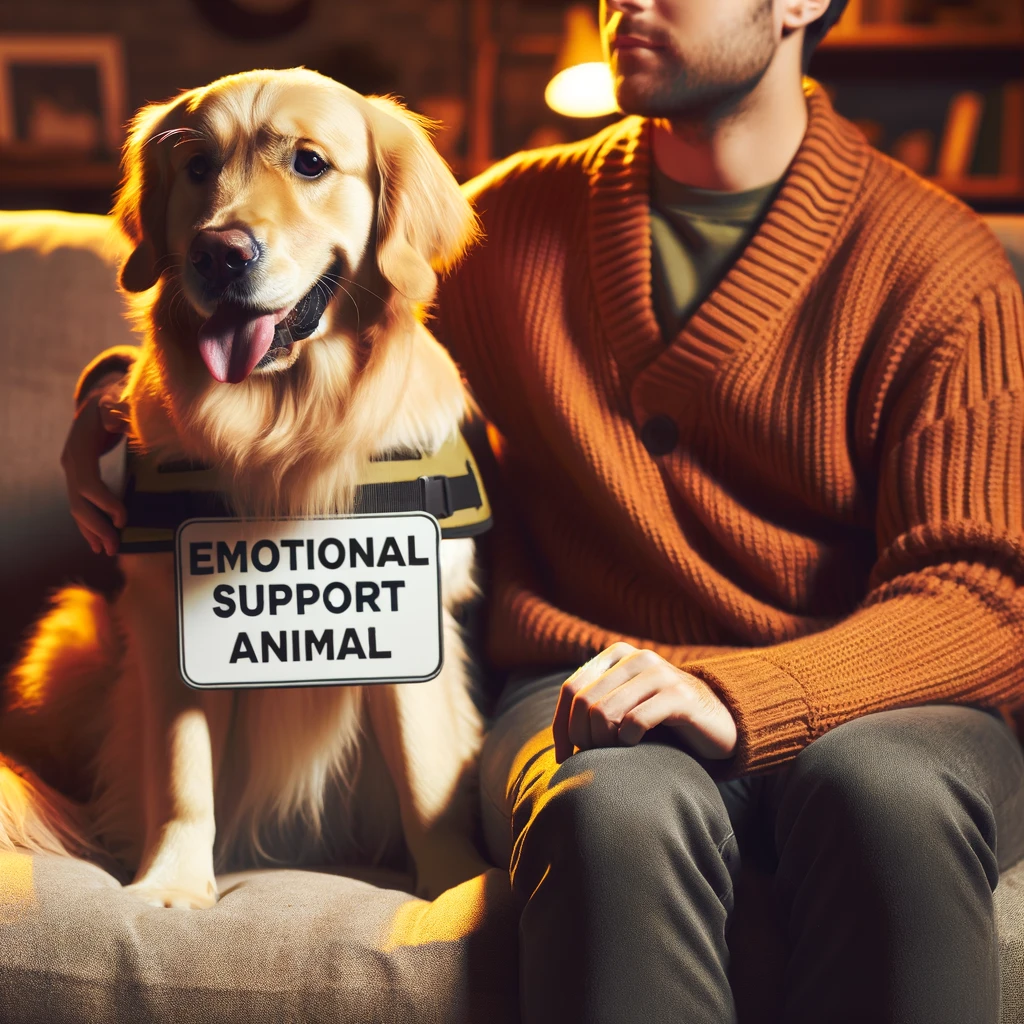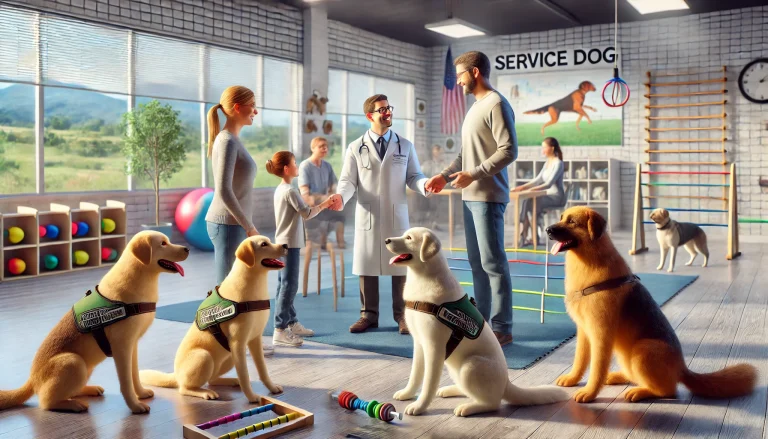Service animals play a critical role in the lives of many individuals, offering not just companionship but essential support and assistance. Among these animals, service dogs and emotional support animals (ESAs) are the most recognized. However, there are significant differences between these two types of support animals. Understanding these differences can help you make an informed decision about which type of animal best suits your needs.

What Are Service Dogs?
Service dogs are trained to perform specific tasks that assist individuals with disabilities. These tasks can include guiding individuals with visual impairments, alerting those with hearing impairments, pulling a wheelchair, alerting and protecting a person who is having a seizure, or reminding a person with mental illness to take prescribed medications.
Key Features of Service Dogs:
- Training: Service dogs undergo extensive training to perform specific tasks.
- Legal Protections: Under the Americans with Disabilities Act (ADA), service dogs are allowed in public places where pets are typically not permitted.
- Roles and Responsibilities: Service dogs provide direct assistance with daily activities, enhancing their owner’s independence.

What Are Emotional Support Animals (ESAs)?
Emotional support animals provide comfort and support through companionship. They do not require specific training to perform tasks but are recognized for their ability to alleviate symptoms of emotional or psychological conditions.
Key Features of Emotional Support Animals:
- Comfort and Companionship: ESAs offer emotional comfort to individuals with mental health issues.
- Legal Protections: ESAs are covered under the Fair Housing Act (FHA), which allows them to live with their owners in housing that typically does not allow pets.
- Roles and Responsibilities: ESAs do not perform specific tasks related to a disability but provide general emotional support.

Legal Differences Between Service Dogs and ESAs
One of the primary distinctions between service dogs and emotional support animals lies in their legal status and the protections they receive.
Service Dogs:
- ADA Protection: Service dogs are protected under the ADA, allowing them access to public places such as restaurants, stores, and public transportation.
- Task-Specific Training: They must be trained to perform specific tasks related to the handler’s disability.
- Public Access: Businesses must allow service dogs to accompany their handlers unless the dog’s presence compromises safety or fundamentally alters the nature of the business.
Emotional Support Animals:
- FHA Protection: ESAs are protected under the FHA, ensuring they can live with their owners in housing that does not typically allow pets.
- No Specific Training Required: Unlike service dogs, ESAs do not require specialized training to perform tasks.
- Limited Public Access: ESAs do not have the same public access rights as service dogs. They are generally not allowed in public places like restaurants or stores.
Roles and Responsibilities of Service Animals
Understanding the distinct roles and responsibilities of service dogs and emotional support animals is crucial for prospective owners.
Roles of Service Dogs:
- Guiding: Helping visually impaired individuals navigate their surroundings.
- Alerting: Notifying deaf individuals of sounds or alarms.
- Assisting: Performing tasks such as pulling a wheelchair or retrieving dropped items.
- Alerting to Medical Issues: Recognizing signs of a medical emergency and alerting their handler or others.
Responsibilities of Service Dogs:
- Maintaining Focus: Service dogs must remain focused on their tasks, even in distracting environments.
- Behavior: They must exhibit calm and controlled behavior in public.
- Training: Ongoing training is necessary to maintain their skills and effectiveness.
Roles of Emotional Support Animals:
- Providing Companionship: Offering emotional support and alleviating symptoms of mental health conditions.
- Reducing Anxiety: Helping reduce anxiety and improve mood through their presence.
Responsibilities of Emotional Support Animals:
- Behavior: While not as strictly trained as service dogs, ESAs should still exhibit good behavior, especially in residential settings.
- Health: Owners should ensure their ESAs are healthy and receive regular veterinary care.
Importance of Pet Insurance and Service Dog Products
Investing in pet insurance and high-quality service dog products is essential for maintaining the health and effectiveness of service animals. Pet insurance helps cover unexpected medical expenses, ensuring your service dog or ESA receives the best care without causing financial strain. Look for policies that cover routine care, emergencies, and chronic conditions.
ServicePupSolutions.com offers a range of products to support your service dog’s training and daily needs. High-quality vests, harnesses, and other equipment ensure your dog is comfortable and easily identifiable, which is crucial for their role as a service dog.
Self-Training Options
Self-training a service dog can be a cost-effective way to obtain a highly skilled animal. ServiceDogOwners.com provides resources and guidance for those interested in training their service dogs. These resources can help you understand the training process and ensure your service dog is well-prepared to assist you.
Conclusion
Understanding the key differences between service dogs and emotional support animals is essential for making informed decisions about the type of support animal that best fits your needs. While both types of animals provide invaluable assistance, their roles, responsibilities, and legal protections differ significantly.
By learning about service dog etiquette, legal differences between service dogs and ESAs, and the roles and responsibilities of service animals, you can ensure a successful partnership with your support animal. Whether you choose a service dog or an emotional support animal, proper planning, training, and care are crucial for maximizing the benefits of these incredible companions.
At ServicePupSolutions.com, we are dedicated to providing the best resources and products to support your service dog’s training and daily needs. Explore our range of products and support to ensure your service dog is well-equipped and healthy.
Looking to boost your income and keep your service dog by your side? Discover the #1 Online Business to Start in 2024! No experience or education needed. Click Here to start your journey today for just $3.95! Don’t miss out—transform your life now!






